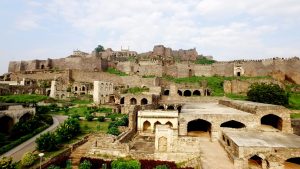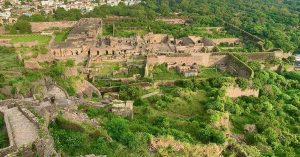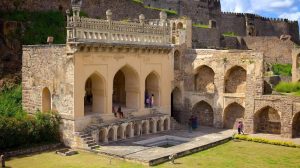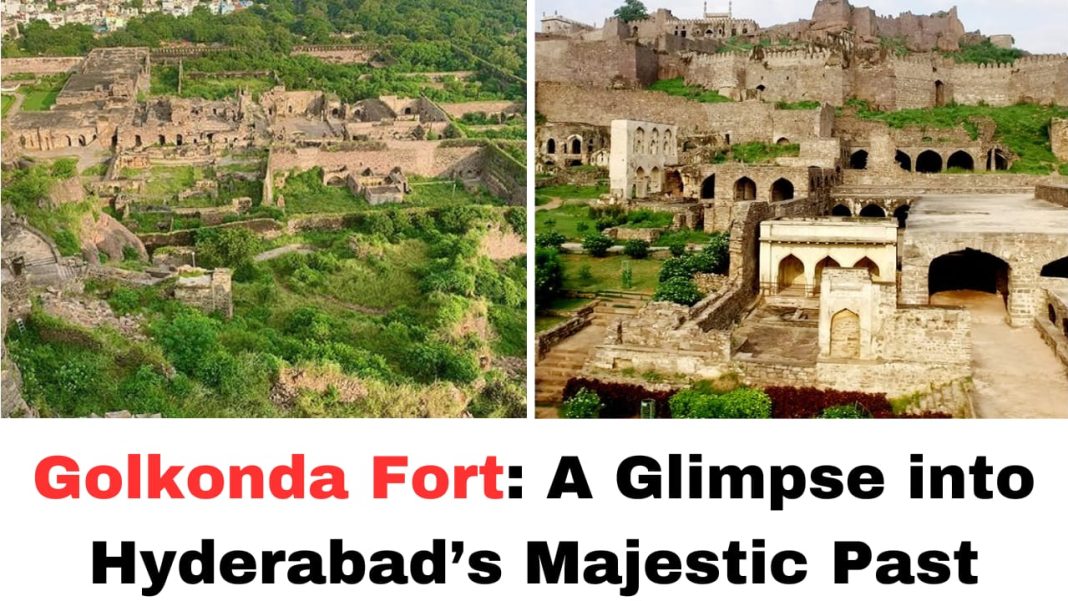Digital News Guru Hyderabad Desk:
Golkonda Fort, one of the most iconic and historically significant landmarks of Hyderabad, India, offers an intricate glimpse into the glorious past of the region. Located about 11 kilometers southwest of the city center, the fort stands tall and proud, a silent witness to centuries of history, battles, and architectural brilliance. With its impressive structure, rich history, and unique design, Golkonda Fort is a popular tourist destination and an important part of India’s cultural heritage.
History of Golkonda Fort
The history of Golkonda Fort dates back to the 11th century, though its grandeur and fortifications were developed under the Qutb Shahi dynasty between the 16th and 17th centuries. Originally, the site was a small mud fort built by the Kakatiya dynasty, which ruled over the region before the Qutb Shahis. It was called “Golla Konda,” which translates to “Shepherd’s Hill,” as the site was supposedly discovered by a shepherd. The fort’s strategic location atop a granite hill made it an ideal defensive position.

In the 16th century, the fort came into prominence when it was taken over by the Qutb Shahi dynasty, and substantial fortifications were added, transforming it into a formidable structure. Sultan Quli Qutb Shah, the founder of the Qutb Shahi dynasty, is credited with commissioning many of the fort’s expansions. Over time, it became the seat of the dynasty and served as the capital of the Qutb Shahi kingdom.
The fort reached its peak under the rule of Muhammad Quli Qutb Shah, who not only expanded the fort’s defenses but also laid the foundation for Hyderabad city itself. The Qutb Shahis ruled over the region for nearly a century, and during their reign, Golkonda Fort flourished as a political, military, and cultural center. However, in 1687, the Mughal emperor Aurangzeb invaded the fort, and after a prolonged siege, the Qutb Shahis were defeated, leading to the fort’s decline.
Despite the fall of the Qutb Shahi dynasty, Golkonda Fort continued to be a prominent structure, albeit in ruins. It stands today as a testament to the architectural genius of its creators and a symbol of Hyderabad’s regal past.
Architectural Marvel
One of the most remarkable features of Golkonda Fort is its architecture, which blends Islamic and Persian styles with the fort’s strategic and defensive requirements. The fort covers an expansive area, stretching over five kilometers in circumference, and is surrounded by a series of massive walls that rise up to 15-20 meters in height. The fort is designed in the shape of a triangle, with three main gateways – the Fateh Darwaza, the Moti Darwaza, and the Banjara Darwaza.
The entrance gates are an exquisite example of the fort’s grandeur, with intricate carvings, arches, and inscriptions that reflect the expertise of the architects of the time. The Fateh Darwaza, in particular, is known for its massive wooden doors, which were once reinforced with iron spikes to deter elephant attacks.

Golkonda’s fortifications are reinforced by 87 bastions, which were strategically placed to provide a clear line of sight for defense. The fort’s walls are made of granite and are equipped with a sophisticated system of gates, moats, and drawbridges to ensure that the fort could withstand prolonged sieges.
The fort also features a series of royal chambers, including palaces, mosques, and audience halls. The Sheher Bagh, a beautifully landscaped garden, once served as the royal retreat for the rulers. The acoustics of the fort are another fascinating feature—there is a bell at the top of the fort that could be heard from a distance of several kilometers, used to communicate messages across the fort. The fort’s architectural marvel also includes a set of well-designed water supply systems, including step wells and reservoirs, which were essential for survival during long periods of siege.
Golkonda Fort: A Story of Innovation
The fort’s design incorporates several innovative elements, particularly in its acoustic properties. The most famous example is the sound system at the fort’s main entrance, which allows sounds to travel from the entrance to the highest point of the fort. A single clap at the main gate of the fort can be heard at the top of the hill, more than 100 meters away, thanks to the remarkable acoustics built into the fort’s architecture. This feature was once used as a security mechanism, allowing guards to communicate and detect any intruders.
The fort’s water supply system was also highly advanced for its time. The Qutb Shahi rulers invested heavily in the construction of reservoirs and step-wells within the fort, ensuring that the inhabitants had access to fresh water even during long sieges. Some of these step-wells still function today, providing insight into the engineering feats of the era.
Cultural and Historical Significance
Golkonda Fort is not just a symbol of military might but also an important cultural landmark. The fort was the center of the Qutb Shahi dynasty’s administration, and the surrounding area was home to artisans, merchants, and scholars. The fort’s strategic location made it a hub for trade, particularly for the renowned Golconda diamonds, which were mined in the region. The fort’s legacy as a center of commerce and culture is reflected in the richness of its architecture, art, and artifacts.

In addition to its architectural and cultural value, Golkonda Fort has a rich history of military conflict. The siege by the Mughals in the late 17th century remains one of the most significant events in the fort’s history. The fort’s fall marked the end of the Qutb Shahi dynasty and the beginning of Mughal dominance in the region.
Tourism and Conservation
Today, Golkonda Fort attracts thousands of visitors from all over the world who come to admire its grandeur and explore its rich history. The fort is a major tourist destination and is managed by the Archaeological Survey of India (ASI). Visitors can explore the fort’s extensive grounds, climb to the top for breathtaking views of the surrounding landscape, and learn about the fort’s fascinating history through informative plaques and guided tours.
In recent years, efforts have been made to preserve and restore the fort’s structures, ensuring that this historical marvel remains a lasting part of India’s cultural heritage. The fort also hosts a sound and light show in the evenings, which narrates the history of Golkonda Fort through dramatic visuals and music, providing a unique experience for visitors.
Conclusion
Golkonda Fort stands as a testament to the ingenuity and splendor of the Qutb Shahi dynasty and remains one of the most important historical and architectural sites in India. Its towering walls, intricate design, and rich history make it a must-visit destination for anyone interested in India’s regal past. A visit to Golkonda Fort is not only a journey through time but also an opportunity to witness the enduring legacy of Hyderabad’s glorious heritage.
You May Also Read: The Howrah Bridge: An Architectural Wonder Over the Hooghly River








